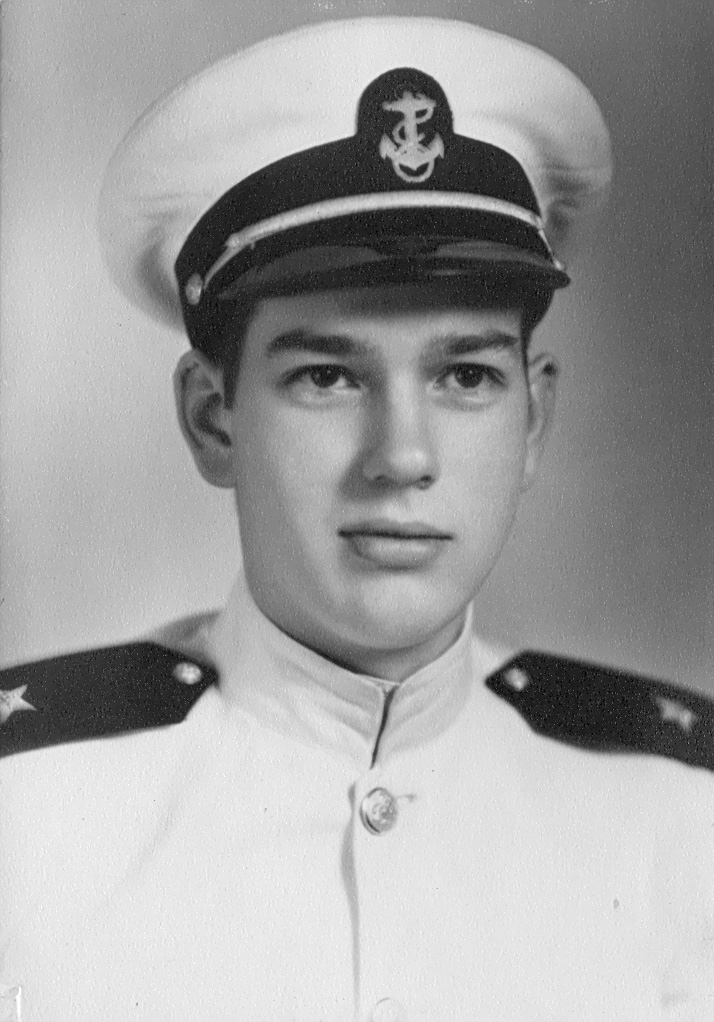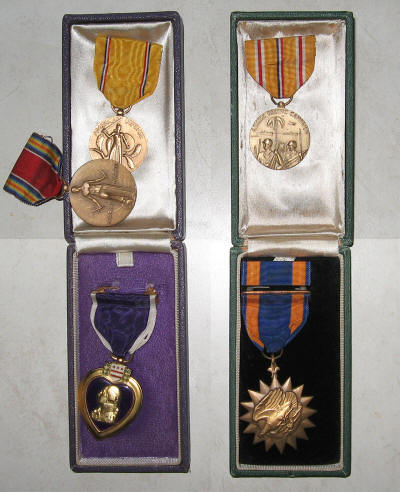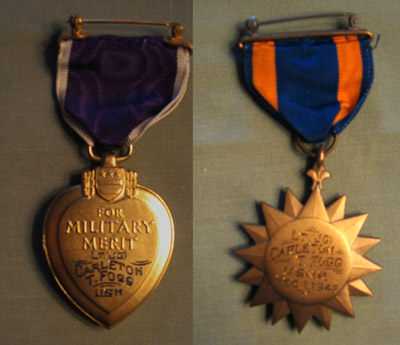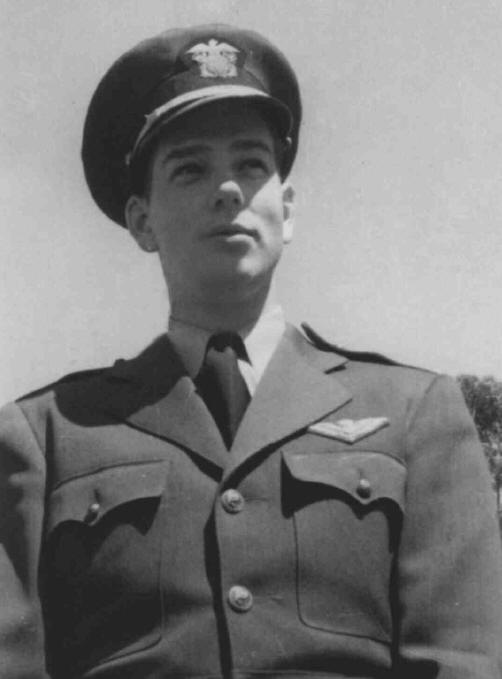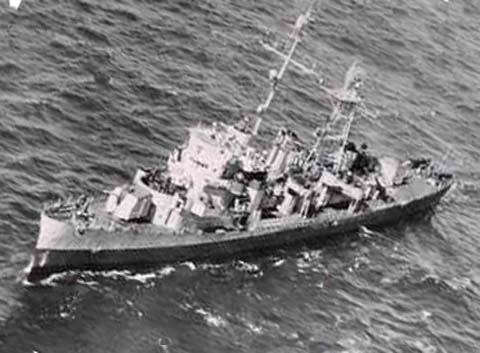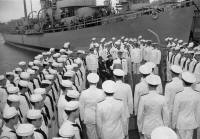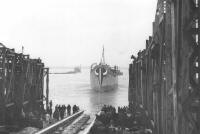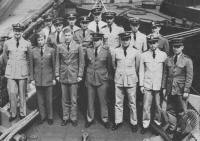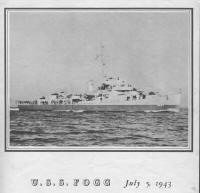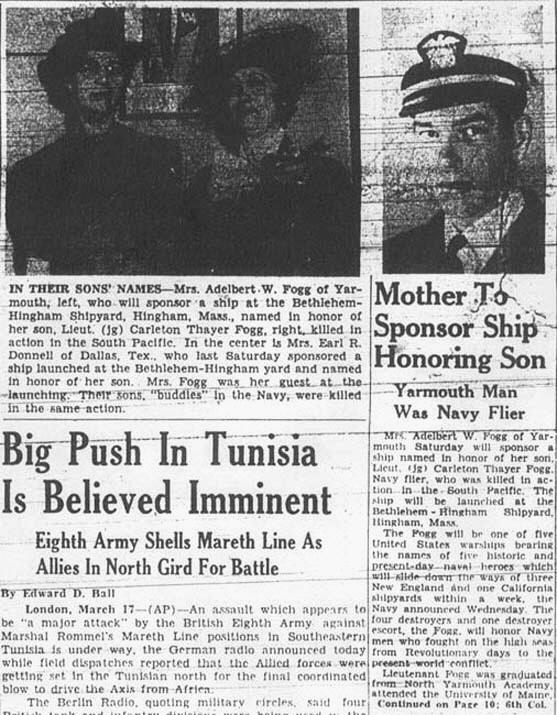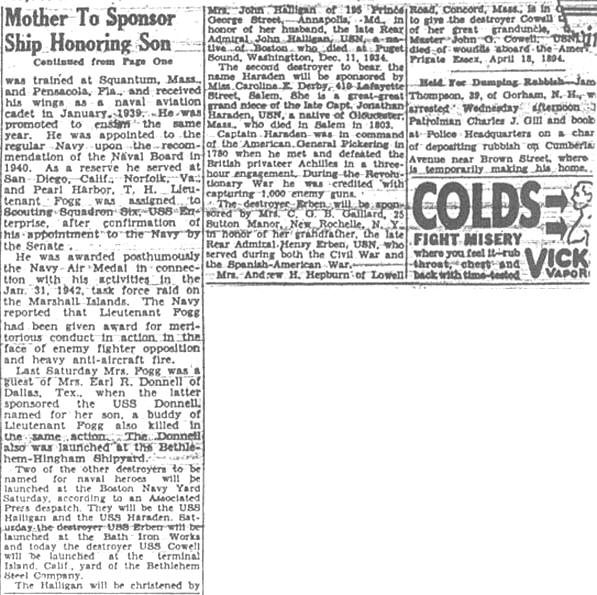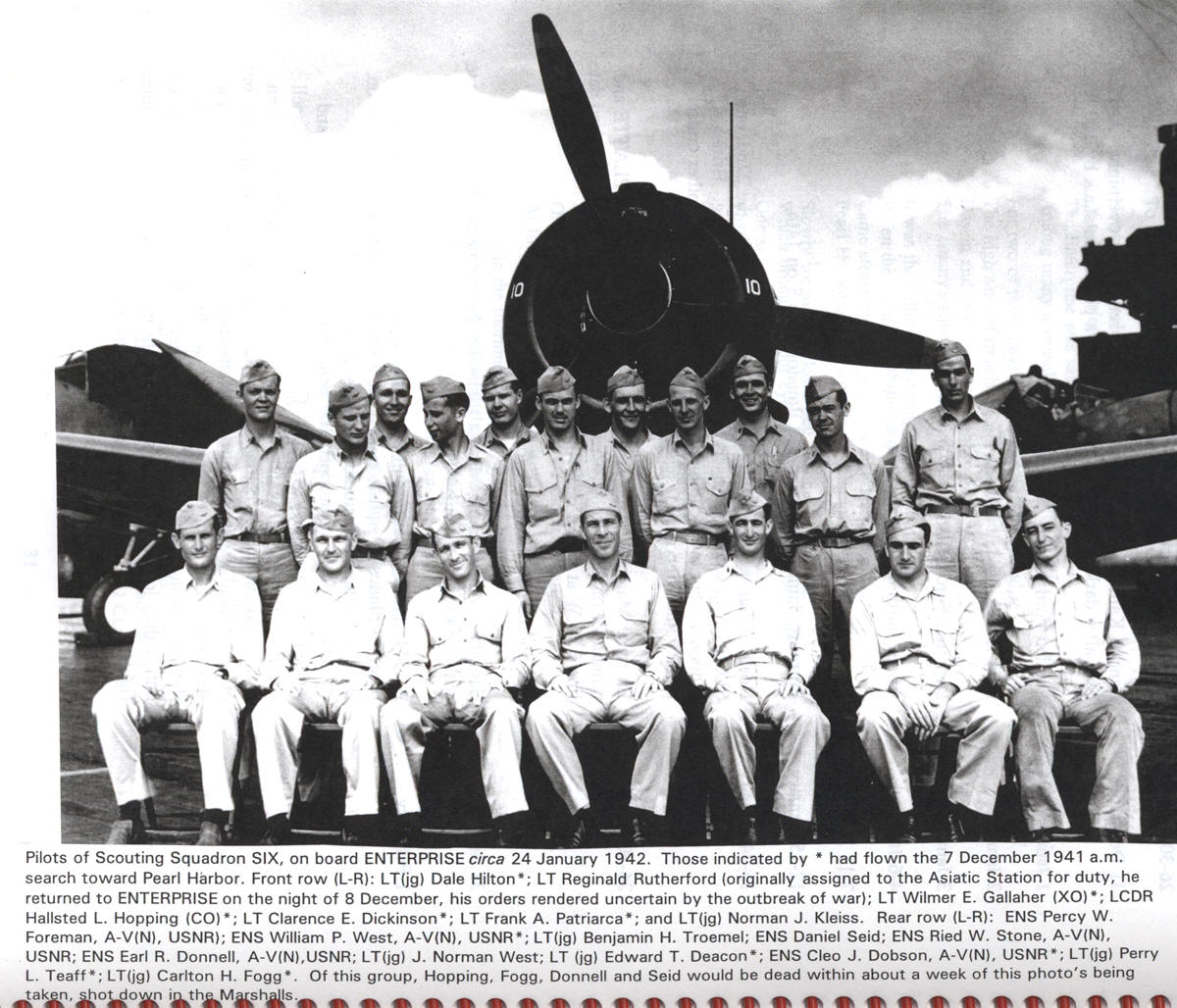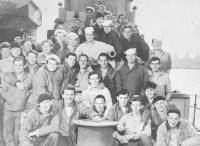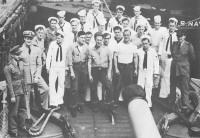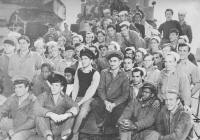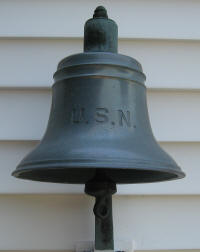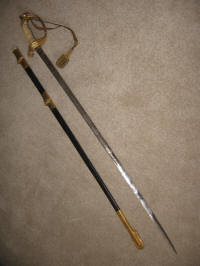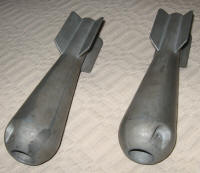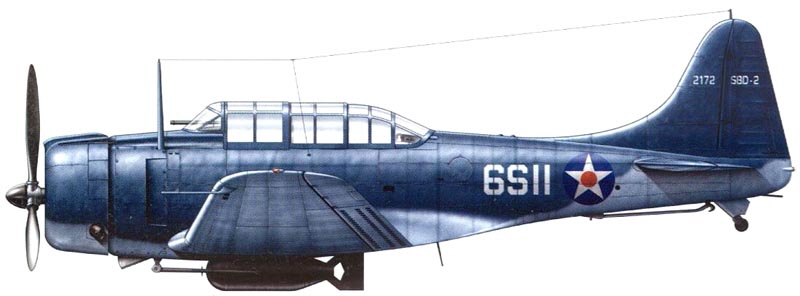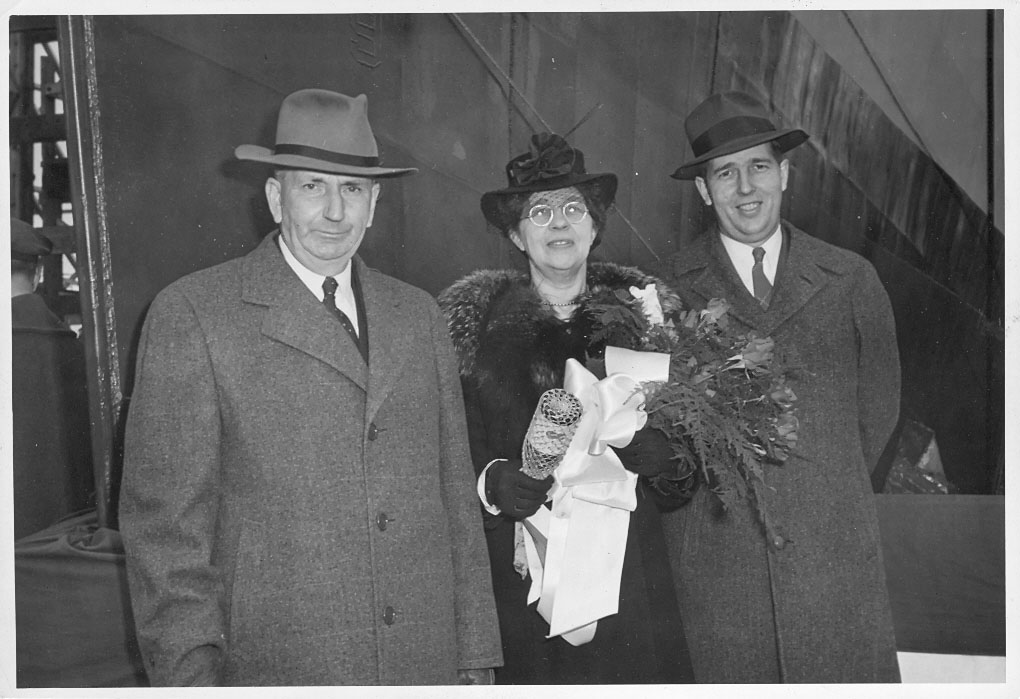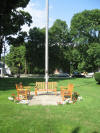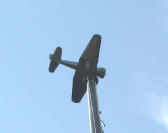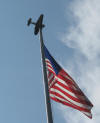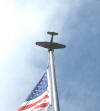Memorial Flagpole Erected in Honor of Carleton T. Fogg at
North Yarmouth Academy in Yarmouth, ME.
Replica of the plane in which he and Otis Dennis gave
their lives, in WWII.
|
Photos and Speech courtesy of
Steven Fogg |
MEMORIAL SERVICE
FEBRUARY 22, 1942 4PM
SAFFORD AUDITORIUM - North Yarmouth Academy
Ten years ago North Yarmouth Academy welcomed to this
building its initial group of Yarmouth students. Sophomores of
the Class of 1934, entering in September 1931, were the first to
spend three years here before graduation. That class was not
merely a leader in point of time, but may fairly be described as
outstanding in other respects, for, although their enthusiasm,
cooperative effort, and general morale may have been equaled, it
has never been exceeded by any subsequent group.
It was a member of that class who first won a scholarship
in competitive open examination at the State University and thus
nailed high the guidon for the stimulation of others who were to
be equally successful in the years to follow.
It was that class which furnished more winners in County
Prize Speaking than any other, and it was the boys of that class
who, by their own hard effort, graded the unfinished lawn in
front of this auditorium and thus became (as one of the number
sitting in the audience this afternoon hoped they might), "the
first class to graduate with a completed school campus."
And from that class went the first graduate to enlist in
the Naval Air Service, the first to win his wings, and as we
have sadly learned within the week, the first alumnus to give
his life in the service of the Nation.....
Lieutenant Carleton Thayer Fogg, United States Naval Air
Service, killed in action in the Pacific Theatre in February,
1942.
We all remember "Foggy" as it was inevitable he should be
nicknamed by his classmates.... remember him for his cheerful
manner, his unfailing spirit, and his active participation in
the affairs of school, church and community. A member of the
Yarmouth orchestra and band, he was also a member of the
Yarmouth Town Band, and found time as well to take part in the
dramatic activities of the school.
His interest in aviation began before he entered the
Academy and was continually manifest in his study of the related
sciences. Despite mild efforts on the part of parents, teachers
and friends to steer him toward less hazardous engineering
pursuits, his heart and mind fixed on the one objective, ... a
career in aviation. He was one of those fortunate lads who knew
early in life what he wanted and stuck steadfastly to his
objective. And so it came about that, after three years spent at
the University of Maine, he entered the Naval Air Service
Training at Pensacola and, in due course, was commissioned an
Ensign in the service.
Almost exactly one year ago he was here in Yarmouth for a
visit and on March 7, 1941 sat here on this platform and, much
to the delight of the student body, answered their questions
regarding the Naval Air Service and the training of an air
pilot. It was altogether characteristic of him that he appeared
on that occasion, not in uniform, but in "civvies", or, as our
British allies would say, "in mufti".
Indeed, his parents never saw him in uniform. To him a
uniform was not a device for display, but merely one of the
necessary accoutrements of an officer of the service to be worn
only when on duty. His whole life was like that, in school and
out, for it was his ambition to silently serve rather than to
splendiferously scintillate.
That we honor his memory by this gathering today is wholly
fitting; but, should we honor him ONLY by such an assembly,
should we feel our duty now done to him and to inestimable
thousands like him who have fallen and who will continue to fall
in these days ahead, we would indeed be relaxed in our
commemorative efforts.
Every man who has served on the field of battle in time of
war knows that, though he may have undergone his baptism of
fire, though he may have stood long hours of sentry duty under
adverse conditions; though he may have observed long lines of
ambulances carrying wounded to the rear; yet the grim reality of
war does not sink into his consciousness, permeate his whole
being, and shock his very soul until some "buddy", some
schoolmate, some dear friend is struck down.
So, in a lesser degree, it is with the community. We read
dispatches of military disaster, the air waves carry black news
and dire warnings, we are depressed, "war-weary" (as we think)
and often annoyed by such inconveniences as rationing of
consumer goods until, one day, there comes news of a man who was
our friend and our neighbor caught in the pattern of war.
THEN WAR STRIKES HOME.
What man, whatever his need, can grouse and grumble at the
rationing of rubber when his friend has made the supreme
contribution; what civilian club-room admiral or barbershop
general can revise and rearrange with his pitiful
HALF-information battle lines, worldwide in their extent,
entered by his neighbor who, like a brigade famous in history,
knew and acted upon the military axiom "Theirs not to reason
why, theirs but to DO, - and die!"?
What man can sit in idle revolt, refusing to labor pending
the adjustment of some petty difference between labor and
management, with the example of sacrifice of the soldier and
sailor before him!
What man, faced with the news of a neighbor lost in action
and living daily under the expectation of similar news from
others, does not need to reexamine the semantics of the words
"Hardship" "Sacrifice" and "i n c o n v e n i e n c e" in his
personal vocabulary.
No greater honor could be done the memory of him whom we
would salute today than for each and every one of us here to
resolve and NOW to erect an insurmountable wall in our mentality
and consciousness to which it may truly apply.
In the difficult, dark and dire days that lie immediately
before us and in the days to follow when luxuries and
conveniences we once knew may not return, let us, in abject
humbleness, be ever mindful of the youth of our own nation who
are or who have been carrying "somewhere out there" where the
meanest comforts of home would represent the peak of luxury.
Today, from the pulpits of churches throughout our
country, tribute is being paid to an American patriot, the
chosen leader of men whose steadfast courage in the face of
hardship never since known in this land made the establishment
of this nation possible. What sacrifice imposed by rationing,
restriction, and regulation today can compare with the suffering
of those ill-clad, ill-fed, and barefoot men of Washington at
Valley Forge? And yet in THAT day there were TORIES who held the
Declaration of Independence a mistake, ridiculed the nondescript
volunteer army, and made the lives of those soldiers and their
leaders the more miserable by withholding full financial and
moral support.
Within the fortnight we have honored the memory of another
great American, Abraham Lincoln, who, long before he rose to the
presidency, repeatedly expressed his "personal wish that all men
everywhere might be free." Viewed with the perspective of three
quarters of a century how Christ-like, how God-like, how sublime
the career and acts of that man. For Abraham Lincoln's character
and personality were such that, the more one studies his life
and acts, the more familiar one becomes with his philosophy and
his career, the more one's very soul is gripped by the innate
humanness and humaneness of the man. As the poet, Carl Sandburg,
his most recent and perhaps his greatest biographer has said,
"There is something about that man, Lincoln, that "gets" you!"
And yet, by a very substantial minority of his
contemporaries in the NORTH as well as in the South, in Yarmouth
Maine as bitterly as in Birmingham, Alabama, he, Abraham
Lincoln, was reviled, hated, detested, and openly cursed. The
slave-holders of the South, the cotton brokers of Boston, the
mill owners of Manchester, England and of Manchester, New
Hampshire, -- men whose material fortunes were threatened by the
threat to slavery -- rose almost as one against him.
Before the Emancipation Proclamation abolitionists abused
him for not going far enough, after it substantial and
influential men in the north as well as in the south found
excuse for greater condemnation than ever.
But, through all his trial, through the hard years when he
likened himself to __________negotiating the Niagara Gorge on a
tight-rope, the lovers of TRUE and UNIVERSAL freedom stood by
his side. While financial interests of "the City" in London
placed their bets on the South, the working men of Manchester,
England stood solidly behind his principals of freedom.
And so today, with a greater slavery threatening to
spread, not through half a nation, but through the entire world,
a slavery which freely flaunts overseers more cruel, punishment
more savage, and intolerance extending beyond race and color to
creed and party... what, too often, do we find?
Unity of division?
Tolerance or intolerance?
Sacrifice or selfishness?
While leaders more avaricious, unprincipled, cruel, and
sadistic than any the world has every known struggle to impose a
"new order" (which is in deed NO order) upon the entire sphere,
some sit mentally supine, calm and complacent, while sentries
sound the alert.
Some, wearied with the trouble and toil, the friction
between warp and weft that preserves the very fabric of
democracy and liberty, led by laziness , dare to think that
maybe, -- perhaps, -- democracy is too much trouble after all.
YOU know the answer.
If not, ask the starving Poles, the Danes, the
Quisling-ruled Norwegians, the inhabitants of UN-occupied
France, the Greeks, the tea-dancers of Singapore!
WAR is neither a tea-party nor the hullaballoo of a
moment, but a long, hard, wearying grind which can and WILL be
met with characteristic American courage.
Democracy IS worth saving, it IS worth the "blood, and
sweat, and toil, and tears" that it has demanded of its
adherents down through the ages.
Reveille sounded in September 1939, ASSEMBLY on December
7, 1941; let us make sure that RETREAT will never be sounded by
America though TAPS sound a million times or more in the
interim.
Let us here dedicate ourselves each and every one, to the
unfinished task remaining before us that, in the words of
Abraham Lincoln, we may "nobly win" and not "meanly lose the
last best hope of Earth".
To the names of illustrious military alumni, Generals
Oliver C. Howard, Charles W. Roberts, Frederick D. Sewall,
Samuel J. Anderson, and Isaac W. Starbird, NORTH YARMOUTH
ACADEMY, in sorrowful pride, adds yet another,
LIEUTENANT CARLETON THAYER FOGG.
In his spirit let us carry on!
Stanley W. Hyde
Principal
NORTH YARMOUTH ACADEMY
